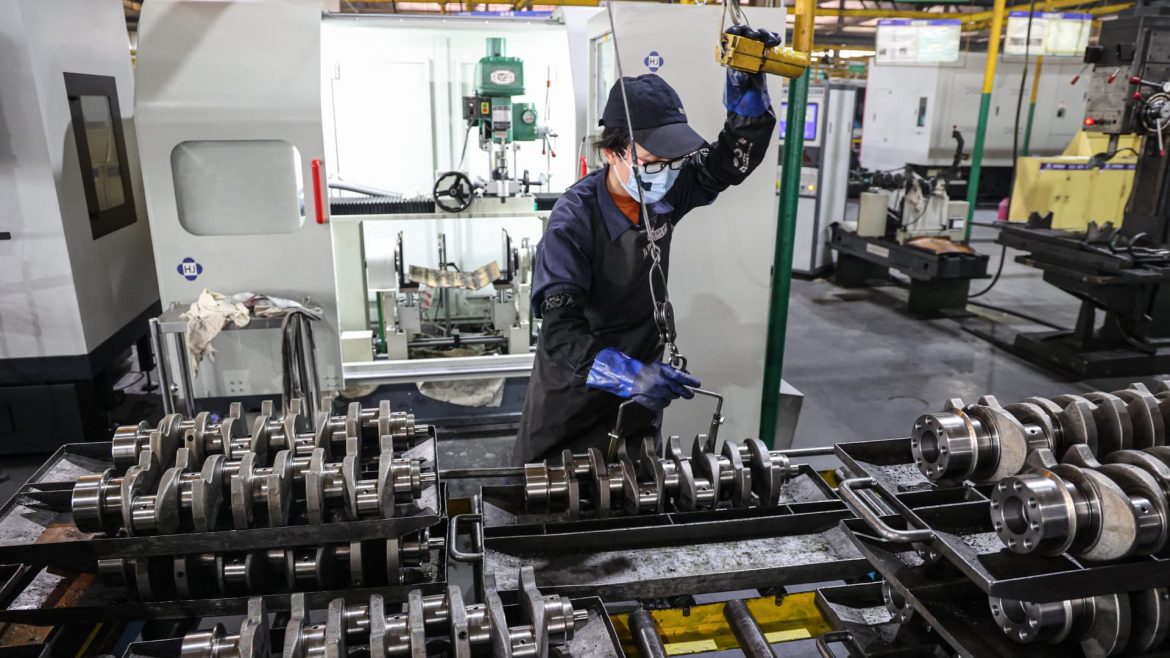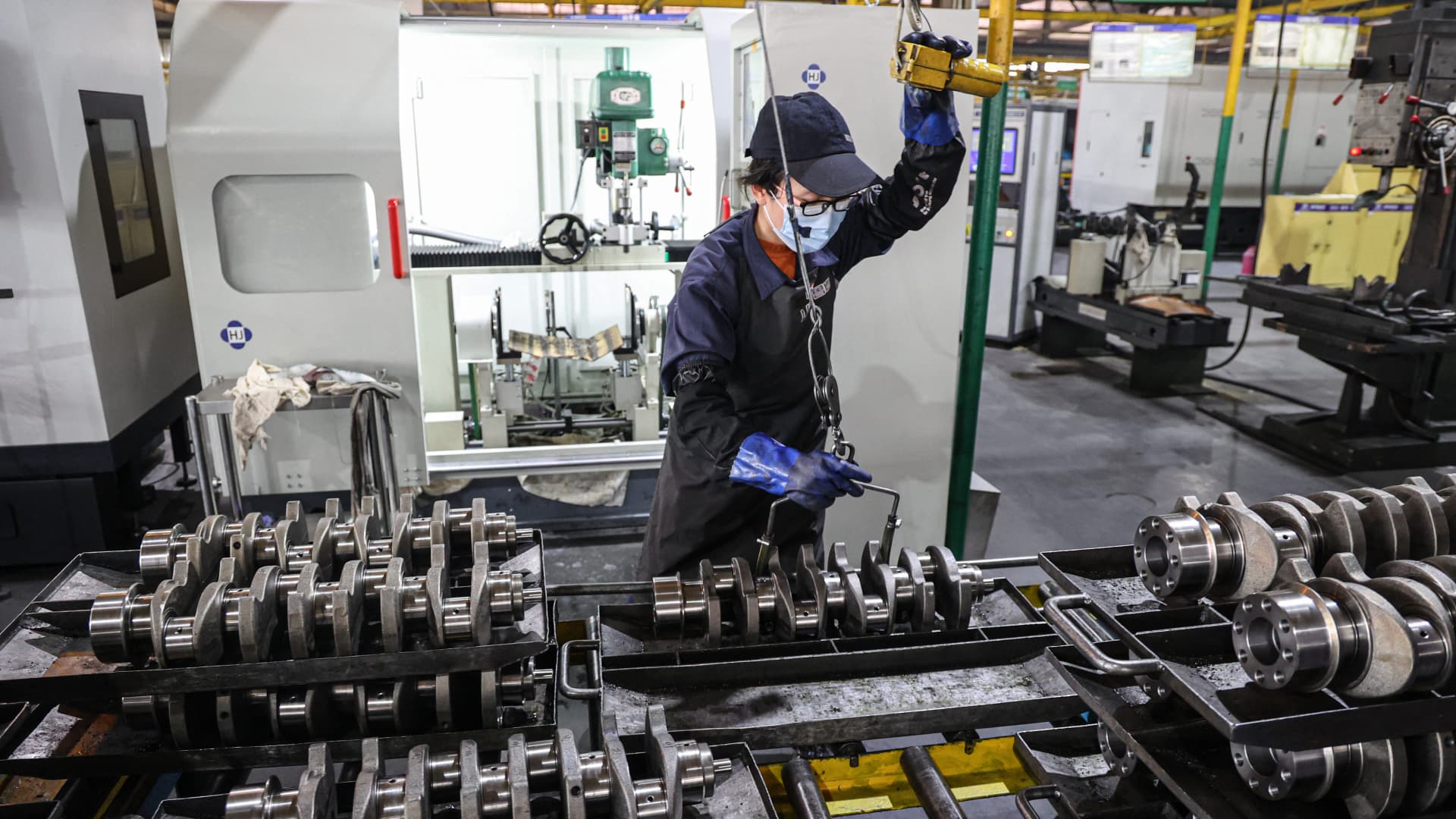China’s industrial profits in April 2025 demonstrated a surprising resilience, increasing by 3% year-on-year despite the ongoing challenges posed by substantial U.S. tariffs and lingering deflationary pressures. This latest official data paints a nuanced picture of China’s economic landscape, highlighting both strengths in industrial output and weaknesses in domestic consumption and export dynamics.
Industrial Profit Growth Amid Tariff Pressures
In April alone, cumulative profits at major Chinese industrial firms rose 3%, surpassing the 2.6% growth recorded in March and continuing the upward trend seen since the beginning of the year. From January through April, industrial profits increased by 4.3% year-on-year, a figure that remained stable compared to the first quarter. This stability suggests a degree of structural resilience within China’s industrial sector.
Several factors contributed to this performance. First, industrial output grew 6.1% year-over-year in April, exceeding analyst expectations of a 5.5% rise despite slowing somewhat from March’s 7.7%. Notably, this output growth was bolstered by Beijing’s targeted stimulus measures, which started to take effect and helped counteract some of the negative impacts of trade tensions.
Moreover, foreign demand for Chinese products saw an improvement in April, even though exports to the United States experienced a substantial decline, falling 21%. The drop in U.S. shipments — the sharpest decrease in nearly two years — was offset to some extent by rising exports to Southeast Asian markets and other international partners, reflecting a shift in trade patterns due to tariff disruptions.
The Persistence of Deflationary and Demand Challenges
Despite robust industrial profit growth and output, China’s domestic consumption signals remained muted. Retail sales for April rose by only 5.1%, missing the 5.5% forecast and cooling compared to prior months. This shortfall points to softer consumer spending, which continues to temper broader economic momentum.
Persistent deflationary pressures within certain sectors also weigh heavily on profit margins and price settings, complicating firms’ efforts to sustain healthy earnings increases. Reduced pricing power amid an environment of global uncertainty and trade frictions narrows profitability even as volumes grow.
Trade War Impact and Tariffs: A Complex Picture
The U.S.-China trade tug-of-war remains a defining element of the current economic cycle. U.S. tariffs on Chinese goods reached punitive levels, sometimes exceeding 100%, provoking retaliatory tariffs from China. Despite these punitive measures, China’s industrial sector has shown notable adaptability:
– Export diversification: While exports to the United States dropped sharply, shipments to Southeast Asian countries rose markedly, allowing China to cushion losses in one market through gains in others.
– Stimulus and policy support: Beijing’s economic stimulus programs have encouraged production activity and investment, helping firms maintain output levels despite increased costs linked to tariffs.
– Tariff adjustments: Negotiations and intermittent tariff reductions, alongside temporary holds on tariff escalations, have provided some relief, though the trade conflict remains unresolved.
This dynamic has resulted in a paradox where industrial output and profits outperform expectations, yet the broader economy encounters setbacks, especially in external trade relations and consumer demand.
Broader Economic Implications and Outlook
China’s economy posted growth of 5.4% in the first quarter of 2025, exceeding analysts’ projections. Industrial sectors, in particular, showcased strength and contributed significantly to this growth despite headwinds.
However, the manufacturing sector’s resilience contrasts with more cautious retail sales figures and faltering consumer sentiment, signaling a potentially uneven recovery trajectory. While stimulus efforts and export adjustments are helping sustain industrial profit gains, weaknesses in demand and global trade make the medium-term outlook less certain.
Moreover, the ongoing tariff environment introduces volatility and uncertainty that could constrain sustained profit growth. Industrial firms face margin pressures from cost increases, while export-dependent companies must continually navigate shifting markets and tariff-driven trade realignments.
Conclusion: Industry Adapts, Economy Faces Tests
China’s industrial sector in April 2025 exemplified adaptability and underlying strength in the face of significant external challenges. The 3% rise in industrial profits, supported by better-than-expected output and beneficial policy interventions, reveals a cornerstone of economic resilience despite expensive U.S. tariffs and deflationary pressures.
Nonetheless, subdued consumer demand and the sharply reduced exports to the United States underscore that this resilience exists amid notable risks and structural challenges. The evolving trade war, alongside domestic economic dynamics, suggests a complex balancing act for China’s policymakers and industrial players striving to maintain momentum.
Ultimately, the April data sends a message of cautious optimism: China’s industrial economy is far from collapse, yet it must continue navigating a shifting terrain of geopolitical tensions and mixed domestic signals to sustain its growth trajectory in 2025 and beyond.





